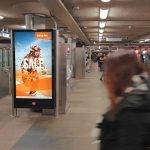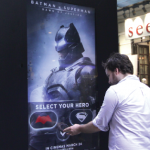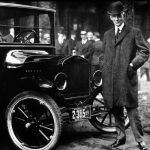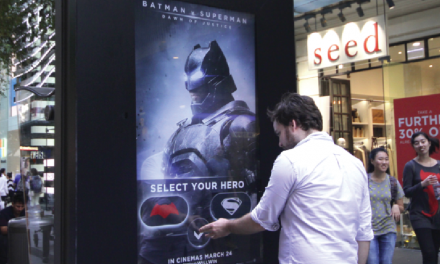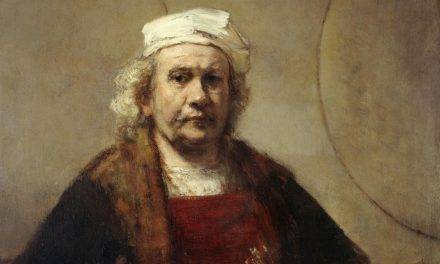The future of Digital Out of Home (DOOH) looks promising. Expenditure figures show an upward trend. The market seems ready but there’s still much to achieve. And much to overcome. CSDM data specialist Sten Ouderdorp is taking stock. What are the opportunities? What are the obstacles?
For years Out of Home (OOH) has taken a constant fifth position within the media expenditure. DOOH now has a share of about 12 percent in the Netherlands, just as it has in Germany, Austria and Switzerland. Compared to countries such as England (43 percent), where experts expect DOOH to overtake the paper poster market within two years, and China (35 percent), this is relatively small. Due to the rapid increase in digitalisation of analogue screens, however, this will change within the foreseeable future.
Year on year the number of digital screens grew in 2016 by as much as 340 percent. Existing digital screens extended and were further developed, resulting in increased advertising potential. A good omen. The economic growth and the increase in both consumer activity and mobility furthermore ensures that more consumers will be exposed to DOOH campaigns. All this creates a promising environment for (D)OOH.
Four percent growth
According to research carried out by media agency Kinetic, the Netherlands has around 8000 ‘objects’ including DOOH screens. The growth of all media expenditure within the sector in 2017 is expected to be at least four percent and will amount to approximately 180 million euros (sources Kinetic Handbook 2016-2017, Outlook Magna 2017). It should be noted, however, that premium networks with high-quality screens at high-traffic locations will profit the most.
An analysis by consultancy firm PWC shows that during the next few years the continuing expansion of DOOH will be at the expense of OOH. Exterion even announced that due to decreasing income and sky-high production and procurement costs, it will no longer offer billboards. By 2019 40 percent of the current outdoor OOH spend will be invested in DOOH. According to PWC, the growth in the Netherlands could be even higher because of the head start in programmatic. Media agencies have announced that in 2018 they want to digitize 50 percent of advertising budgets in order to deliver price reductions to advertisers, as well as increasing effectivity and efficiency.
Disincentives
So, is everything sunshine and roses for DOOH? Certainly not. Hein Asser, Contracting Director Print and OOH at Magna, definitely sees some obstacles that may curb the projected growth and eliminate the favourable conditions.
Everyone, from advertisers to operators, takes a positive view of the potential of DOOH, Asser assures. ‘At the same time this raises the question if the whole market is convinced that everything is digitalizing faster, what is holding that digitalization back? The entire commercial market wants accelerated digitalization, but the speed is determined by the weakest link: licenses, concessions, administrative procedures and conflicting personal agendas. Realistically, one should admit that large-scale growth of DOOH will take a few more years.’ Another factor that might be getting in the way of DOOH and actually already does so, is the resistance of OOH operators and media buying agencies to programmatic. OOH operators are afraid of loss of turnover by decreasing prices per screen, whereas these agencies fear that their costs will increase because they lose control of the procurement process.
‘Mobile only’
Be that as it may, and whatever the scope may be exactly, Asser claims, DOOH is on the way to maturity and will continue to develop, especially due to the use of innovative technology, such as programmatic. There are plenty of opportunities for building connections and combining with online platforms. Some ingenious media mixes of OOH, television and print have resulted in additional growth of over three percent.
By flexibilization (i.e. giving advertisers the potential to tell their story at the right moment, at the right location and aimed at a specific target group), the addition of valuable data to propositions as well as tracking consumer movements, e.g. via GPS, and establishing how much consumers have effectively seen via eye-tracking research, the value and relevance of DOOH medium will increase significantly. But there is more. And that has all to do with the revolutionary popularity and intensive use of the smartphone.
Four in five Dutchmen, approximately eleven million (86 percent!), own such a device. ‘The smartphone is like a Swiss army knife’, Google top man Larry Page once said, referring to the versatile applications. We increasingly use the smartphone as our primary source of news, entertainment and maintaining contact via email and social media. But also for measuring our health and sports performance and also ‘logging’ our lives with photos and videos and spending free time with gaming, reading books and magazines and last but not least arranging financial matters; the smartphone is on the rise in every area. Larry Page predicted it in 2014: ‘We are no longer in a mobile first world, we are in a mobile only world.’

Source: Ghost in the Shell
DOOH custom-made
hat is important is that eighty-five percent of smartphone users often activate their phone ‘on the road’ and thus generate valuable social and geographical data traffic with which DOOH can benefit by responding more precisely, better targeted and real time to specific target groups, both national and local. Local retailers, for example, do not benefit from national reach, but they benefit from local, affordable penetration and activation, whereas major brands in terms of target group (societal class, commuters) can be based on specific traffic and weather conditions in a more general and flexible way in terms of moment, location and frequency. In the summer, think of manufacturers of hay fever remedies, ice-cream and sunglasses, whilst in winter consider advertisers offering last-minute get-aways to the sun, films, hot chocolate or smoked sausages. This is in short DOOH custom-made and the additional advantage is that media planners and advertisers can monitor and control the process themselves.
An additional leap forward for the medium can be achieved by generating interaction between digital screens and ‘mobile only’ passers-by. Scan a code, via an app make contact with bluetooth or check url and receive information about products and services, offers, discount vouchers etc. Offline and online seamlessly blend together and offer advertisers the opportunity to focus on target groups precisely and optimally.
The DOOH key words are therefore personalization, interaction and activation. In other words, the ultimate goal of DOOH is not so much digitalization and/or extending or rolling out digital networks. The key success factor seems to lie in the rate of return, increased effectivity and, in market terms, added ‘value’ for their campaign budgets.
Photo source: Artur Sadlos



